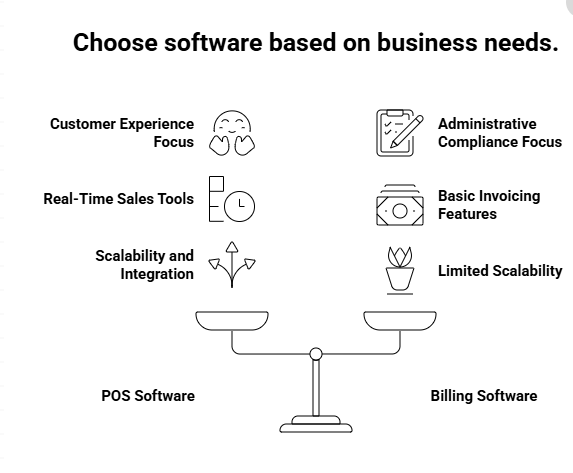
It may be an easy question for many business leaders, but the fact that you don’t know the answer is completely normal—and hey, that’s what we’re here for: to help you. A point of sale software, or POS for short, is one of the most common systems implemented in industries such as retail or financial services. But is it different from a billing and inventory software?
What is POS software?
A POS software or point of sale system is a technological solution designed to manage transactions at the very moment they occur—that is, when your customer pays for a product or service. It’s not just a digital cash register: a POS system for restaurants, retail, or service businesses can integrate features such as:
- Real-time sales recording.
- Automated inventory control.
- Table and order management for restaurants.
- Integration with loyalty programs and digital payment methods.
- Detailed reports on sales, margins, and consumer trends.
According to a study by Grand View Research (2023), the global POS software market will reach $181 billion by 2030, with an annual growth rate of 10.8% Source. This growth is driven by retail digitalization and the need to obtain predictive data to optimize decision-making.

What is billing and inventory software?
Billing and inventory software is mainly focused on administrative management. Its purpose is to make financial control easier, issue legal invoices (electronic or physical, depending on the regulations of each country), and manage warehouse stock.
A system of this type usually includes:
- Issuance of electronic invoices meeting tax requirements.
- Tracking of product inflows and outflows.
- Basic financial reports.
- Accounts payable and receivable tracking.
- Inventory control by batch or series.
Many businesses choose a free billing and inventory software as a starting point, especially in their early stages. However, these options are often limited in scalability and advanced features, which can become an obstacle when the business grows and requires predictive analysis or integrations with other platforms.
Key differences between POS software and billing and inventory software
Although both systems share elements like inventory control, their main objectives are different. POS software focuses on customer experience and operations at the point of sale, while billing and inventory software focuses on administrative compliance and accounting management.
- Focus: POS is operational and customer interaction–oriented; billing is administrative and financial.
- Features: POS includes tools for real-time sales, multiple branches, and analytical reports; billing software is limited to issuing invoices and stock control.
- Scalability: POS is designed to grow with the business, integrating with CRM, ERP, and advanced analytics; free billing software may fall short of these needs.

Which is best for your company?
The choice depends on the type of business and its growth projections. If your company just needs to comply with tax regulations and maintain a basic inventory record, billing and inventory software may be enough. But if your goal is to scale, enhance customer experience, and apply a data-driven predictive model, then POS software is the smarter choice.
For example, a POS system for restaurants not only records sales, but also reveals which dishes are most popular, manages kitchen orders in real time, and anticipates consumption trends. All of this translates into smarter decisions that boost profitability.
At Rootstack, we help you identify which solution best fits your technology strategy, ensuring successful and scalable implementation over time. If your company is ready to take the next step in digitalization, now is the time to act.
We recommend this video






